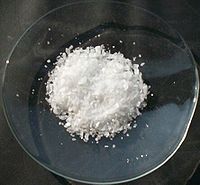
Ion-Assisted Preparation of Bimetallic Porous Nanodendrites for Active and Stable Water Electrolysis.
Sign Up to like & getrecommendations! Published in 2023 at "Small"
DOI: 10.1002/smll.202207332
Abstract: Delicate electrochemical active surface area (ECSA) engineering over the exposed catalytic interface and surface topology of platinum-based nanomaterial represents an effective pathway to boost its catalytic properties toward the clean energy conversion system. Here, for… read more here.
Keywords: ion assisted; assisted preparation; water electrolysis;

Ultrasonic assisted preparation of ultrafine Pd supported on NiFe-layered double hydroxides for p-nitrophenol degradation
Sign Up to like & getrecommendations! Published in 2022 at "Environmental Science and Pollution Research"
DOI: 10.1007/s11356-022-19641-w
Abstract: NiFe-layered double hydroxide (NiFe-LDH)–loaded ultrafine Pd nanocatalysts (Pd/NiFe-LDHs) were prepared by a facile ultrasonic-assisted in situ reduction technology without any stabilizing agents or reducing agents. Pd/NiFe-LDHs were characterized by FT-IR, XRD, XPS, and TEM. PdNPs… read more here.
Keywords: nife ldhs; assisted preparation; preparation ultrafine; ultrasonic assisted ... See more keywords

Template assisted preparation of high surface area macroporous supports with uniform and tunable nanocrystal loadings.
Sign Up to like & getrecommendations! Published in 2019 at "Nanoscale"
DOI: 10.1039/c8nr07762b
Abstract: The incorporation of catalytic nanocrystals into macroporous support materials has been very attractive due to their increased catalyst mass activity. This increase in catalytic efficiency is attributed in part to the increased surface area to… read more here.
Keywords: surface area; template assisted; assisted preparation; surface ... See more keywords

Template assisted preparation of silicone (polydimethylsiloxane) elastomers and their self-cleaning application
Sign Up to like & getrecommendations! Published in 2022 at "RSC Advances"
DOI: 10.1039/d2ra02583c
Abstract: The formation of self-cleaning functions on silicone elastomers is crucial for practical applications but still challenging. In this study, superhydrophobic silicone elastomers (SHSEs) with a 3D-hierarchical microstructure were achieved during the curing process with the… read more here.
Keywords: self cleaning; preparation silicone; assisted preparation; template assisted ... See more keywords

Phytomediated-Assisted Preparation of Cerium Oxide Nanoparticles Using Plant Extracts and Assessment of Their Structural and Optical Properties
Sign Up to like & getrecommendations! Published in 2023 at "International Journal of Molecular Sciences"
DOI: 10.3390/ijms24108917
Abstract: Cerium oxide nanoparticles were obtained using aqueous extracts of Chelidonium majus and Viscum album. X-ray diffractometry analysis confirmed the crystalline structure of the synthesized cerium oxide nanoparticles calcined at 600 °C. Scanning electron microscopy, UV-Vis… read more here.
Keywords: assisted preparation; oxide nanoparticles; cerium; cerium oxide ... See more keywords